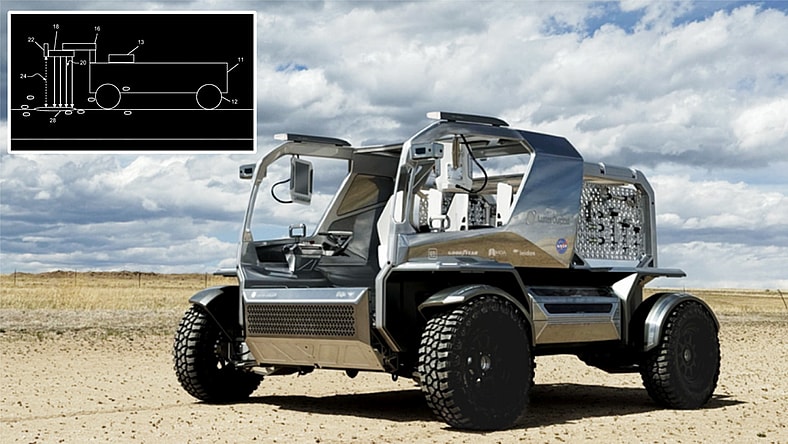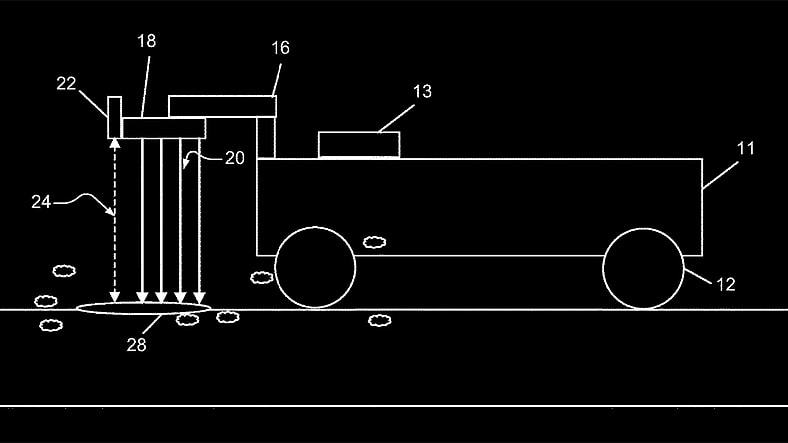GM Designed A Car That Can Pave Its Own Roads … On The Moon

“Roads? Where we’re going, we don’t have roads,” might be what Doc Brown would’ve said if he was working on the General Motors and Lunar Outpost Lunar Terrain Vehicle project.
The automaker and private space company comprise one of the teams that are developing vehicles to be used by NASA’s Artemis program, which is aiming to return humans to the Moon for the first time since 1972.
As was discovered by the first lunar motorists of the Apollo program, one of the biggest engineering challenges that needs to be dealt with is the dusty lunar regolith, which can clog up machinery and become a health hazard if it is carried back into a habitat and gets into the air. While there is no wind blowing it around, the situation is exacerbated by the low gravity environment when the dust is disturbed.
Prototypes of the electric vehicle are designed as rugged, open off-roaders that will use metal mesh tires on the Moon and are equipped with GM production vehicle-based features like traction control, torque vectoring, anti-lock brakes and four-wheel steering, according to GM.
CLICK TO BOOST AMERICAN CARS AND AND RACING IN YOUR SEARCH RESULTS
The plan is for it to have a 10-year, 30,000-kilometer service life. Since there are no service stations on the Moon yet, it will need to be as durable as possible and sometimes the best defense is a good offense. GM was recently granted a patent for an “emitter array for a lunar rover” that addresses the dust issue with frickin’ lasers, if you don’t mind us mixing our sci-fi movie references.

The emitter is on an arm that can hold it in front of the rover, where it can aim either a laser or maser, which is a microwave emitter, at the surface, which it would heat up the fine particles to as much as 1,500 degrees celsius to sinter them into clumps. This would’t create a smooth surface, but it would help keep the dust from getting onto the vehicle and its occupants.
CLICK TO SUBSCRIBE TO THE FREE AMERICAN CARS AND RACING NEWSLETTER FOR MORE STORIES LIKE THIS
“As the lunar rover passes over the sintered surface, the rover is less likely to cause operational problems due to floating dust particles thrown up by wheels of the rover,” the patent explains.
“In order to be energy-efficient, in various implementations the rover may automatically travel on previously sintered paths,” it adds in describing a navigational system that would allow vehicles to trace regularly used roads without having to repeat the process every trip.

The patent is specific to use on the Moon as the lunar regolith has a unique composition that makes it suitable for the process, which isn’t directly applicable to most dirt roads on Earth where the use of high temperature lasers and masers in public may also pose other issues.
Read Also: GM DESIGNED A PICKUP THAT CAN EMPTY ITS OWN BED
GM hasn’t actually demonstrated an emitter like this and, as with patents for terrestrial tech, its existence is no guarantee it will ever be built. It has a few more years to work on it, however, as the first manned Artemis landing mission isn’t expected to happen before 2028 and there isn’t a timetable for when they will open the first GM dealership up there.
As with any good outer space mission, GM does have an interesting contingency plan if the emitter doesn’t come to fruition. It previously filed for a patent for “double wall axles and extension rods for a lunar rover chassis” which are magnetized to repel and attract the regolith in order to direct it away from critical vehicle components. May the force field be with them.
Yea, we know, that’s three references.
Follow American Cars And Racing across our social media on X, Flipboard, YouTube, Reddit, Instagram, and Facebook.
